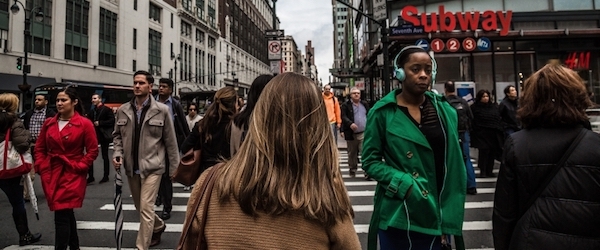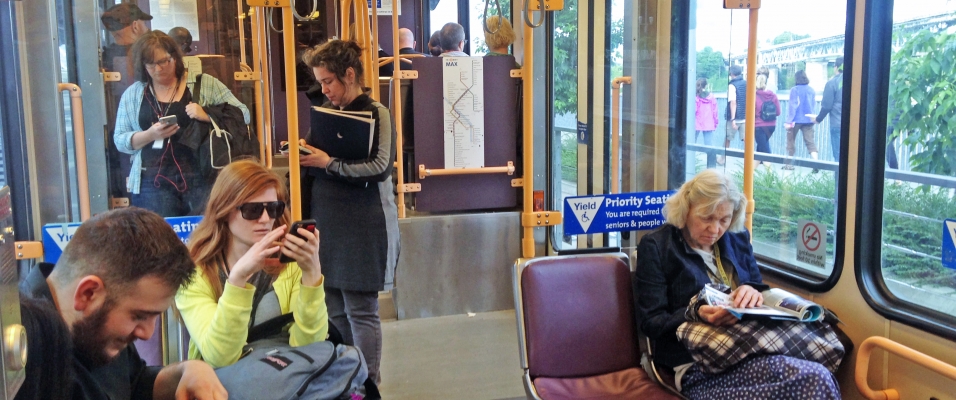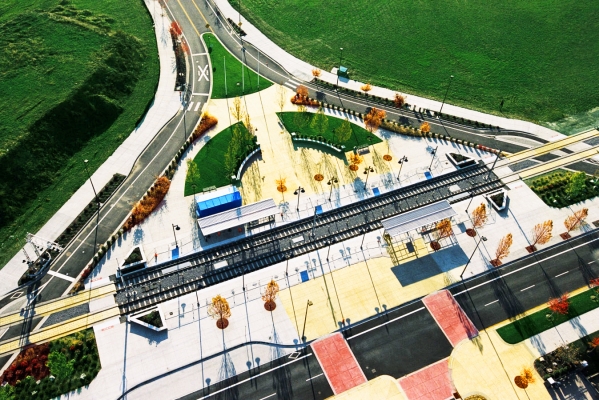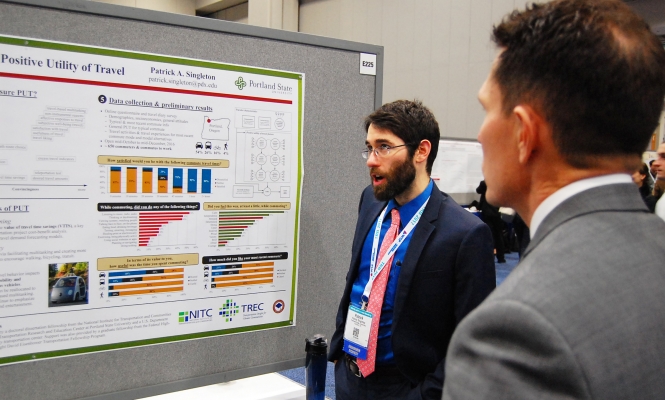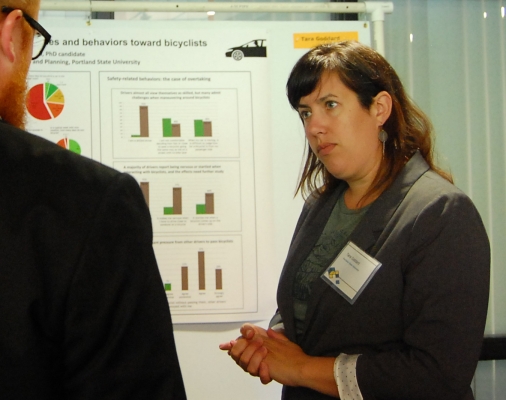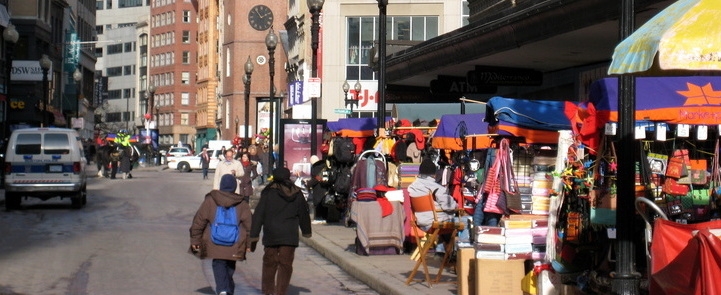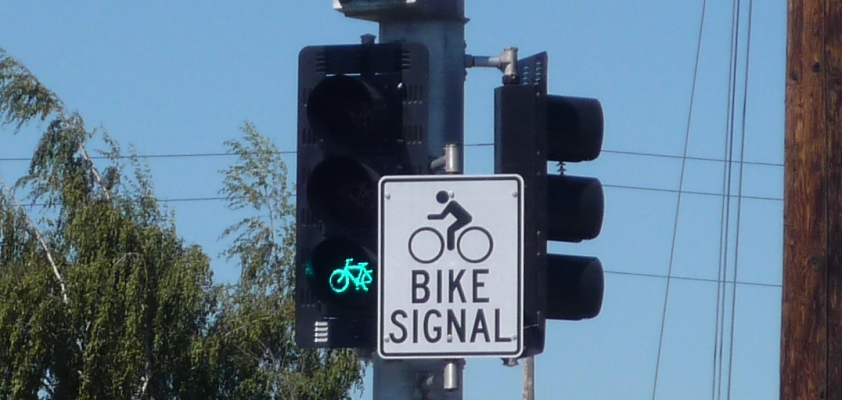Learn more about this research by viewing the two-page Project Brief, related presentations, and the full Final Report on the Project Overview page.
As cities aim to promote sustainable, multimodal growth, sometimes the way we go about development review processes can create barriers to achieving the results we want. Some of the methods we have inherited, while still useful, have distinct limitations.
NITC dissertation fellow Kristina Currans took on this challenge in her doctoral research project, Data and Methodological Issues in Assessing Multimodal Transportation Impacts for Urban Development.
The guidelines for evaluating transportation impacts of new development were originally published in 1976 by the Institute of Transportation Engineers (ITE). Decades later, we’re still using essentially the same processes all across the U.S. and Canada, and these methods—which harbor a lack of...
Read moreNormally we assume that travel is a means to an end, but the latest NITC report examines other benefits of travel—aspects that aren’t about reaching a destination.
One such benefit is travel-based multitasking. A good example of this is using time on a commuter train to listen to music, relax or get some work done. The simple enjoyment of a walk in the fresh air relates to another benefit, known as subjective well-being, in which the act of travel itself makes a person feel better. These intrinsic benefits can impact travel behavior and mode choice, but our current models don’t have any way to reflect this.
NITC fellow Patrick Singleton investigated the policy and planning implications of this in his dissertation, Exploring The Positive Utility Of Travel And Mode Choice.
"The way we analyze travel behavior assumes people want to get from A to B as quickly as possible. We don’t include the...
Read moreTREC’s NITC program has made $500,000 available for grants to eligible researchers through its 2017 general research request for proposals. The RFP is the first since the NITC program expanded to include the University of Arizona and University of Texas at Arlington.
All proposals must contribute to the NITC theme, improving mobility of people and goods to build strong communities, and focus on transportation. They must also show strong potential to move transportation research into practice, inform other researchers, shape national and international conversations on transportation research, and respond to the needs of practitioners and policymakers.
Projects are capped at $100,000, and we encourage PIs to propose smaller projects. Priority is given to projects that are collaborative, multi-disciplinary, multi-campus and support the development of untenured tenure-track transportation faculty.
Key Dates
- Abstracts due: April 14, 2017
- Proposal due: May 15, 2017
- Peer reviews: June 2017
- Project Selection, Awards, and Task Orders: July-August 2017
- Projects begin: Sept 2017
Eligibility
Only eligible faculty members and research faculty from Portland State University, University of Oregon, Oregon Institute of Technology, University of Utah, University of...
Read morePortland State doctoral student Patrick Singleton won the best presentation award for the Doctoral Research in Transport Modeling and Traveler Behavior session of the Transportation Research Board annual meeting in Washington, D.C. This marks the second year running that a Portland State student has won the award, after Steven Gehrke won in 2016.
Singleton presented “Exploring the Positive Utility of Travel and Mode Choice,” drawn from his dissertation research. Positive utility of travel is a concept that travel can provide benefits and be motivated by factors beyond reaching a destination.
The award will be formally presented during the Network Modeling Committee meeting at next year’s Transportation Research Board conference.
Singleton continues to rack up awards. He has been named the NITC university transportation center student of the year and has received Eno and Eisenhower fellowships, being named the top-ranked Eisenhower recipient at the 2015 TRB annual meeting. He was also named a NITC dissertation fellow in 2016.
He is a doctoral student in the Civil and Environmental Engineering department and is involved in several TREC research projects. His adviser is Prof....
Read more of our TRB 2017 coverage here.
Tara Goddard, a doctoral candidate in the Nohad A. Toulan School of Urban Studies and Planning at Portland State University, has been selected as the 2016 NITC university transportation center student of the year.
NITC takes pride in the development of tomorrow’s transportation leaders, involving students in research and supporting student transportation groups.
Goddard is the 11th student of the year since Portland State established its university transportation center in 2006. She is being recognized at the Council of University Transportation Centers 2017 Annual Awards Banquet in Washington, D.C., where she's also attending the Transportation Research Board annual meeting.
Goddard’s dissertation research explores drivers’ attitudes and behaviors toward bicyclists. This reflects her broader interest in the intersectionality between transportation and the social sciences, and how professionals in both disciplines can work together to improve upon public spaces and the ways that people interact within them.
This research focus comes with exciting opportunities for future work, a future which is still being determined: Goddard has applied for academic positions in different parts of the world and is waiting to...
Read moreThe latest report released by NITC offers a unique tool for communities: a guide to broadening residents’ knowledge about their transportation system and how to effect the changes they want to see.
Community involvement and outreach is an important part of any planning effort, but as planners often find, many times the conversation is a difficult one to carry on. Residents may lack the technical knowledge to understand the intricacies of the system, or they may show skepticism toward the planning process in general.
“Transportation Leadership Education,” a project by Portland State University research associate Nathan McNeil, offers a startup kit for communities to stimulate the development of a more involved, educated citizenry.
“One of the conventions has been that public involvement is based around a specific plan or a specific project. This approach is more proactive; it recognizes the value in having informed citizens... building up the civic infrastructure of people, knowledge and connections,” McNeil said.
For the past 24 years, the City of Portland and Portland State University have teamed up to offer a ten-week transportation education course, free of charge to community members.
The Portland Traffic and Transportation Course,...
Read moreA NITC research project from Portland State University introduces a method of cleaning up land use data, for use in improved transportation models.
Transportation and land use are closely interdependent. Considerable work is underway, in Oregon and elsewhere, to develop models that integrate the two.
Planners creating these models often spend the bulk of their time preparing data on the various land uses. Many times the data, gathered from diverse sources, is incomplete and requires the planner to find missing information to fill in the gaps.
In fields outside of transportation, there have been considerable advances in techniques to do this. Data-mining and machine-learning techniques have been developed, for example, to systematically detect fraud in credit data, reconcile medical records and clean up information on the web.
In the transportation modeling community, by contrast, most efforts to tackle the problem are tied to a specific model system and a chosen study area. Few have produced reusable tools for processing land use data.
Liming Wang, lead investigator of the project Continuous Data Integration for Land Use and Transportation Planning and Modeling, offers such reusable...
Read moreA project led by Portland State University researchers Chris Monsere and Miguel Figliozzi has been nationally recognized as one of sixteen high value research projects by the American Association of State Highway and Transportation Officials (AASHTO).
Each year at its annual meeting, AASHTO's Research Advisory Committee selects four projects from each of its four regions to form a "Sweet Sixteen" group of important and influential projects.
The project, “Operational Guidance for Bicycle-Specific Traffic Signals,” reviewed the current state of practice for bicycle signals and evaluated cyclist performance characteristics at intersections. The research has been used to inform an FHWA Interim Approval for bicycle signals.
Bike signals are beginning to be common in major cities throughout the U.S., with some engineering guidance available from the California Manual on Uniform Traffic Control Devices, the...
Read moreLast year, we reported on a Portland State University graduate student project that created a tailored transit solution for the Salem-Keizer area.
This year, the flexible transit system created by students in the Master of Urban and Regional Planning (MURP) program has become a reality.
The West Salem Connector service launched as a year-long pilot program on June 1.
The new service, which focuses on improving transit access for those who actually use it in low-demand areas, will be free for the first six months.
Students in the MURP program spend about five months completing workshop projects, which focus on real-world planning problems and see them through. Not every student project, however, makes it to the stage of implementation.
The fact that the Salem-Keizer flexible transit line is becoming a reality reflects the quality of this group's work.
The Paradigm Planning group consisted of MURP students Darwin Moosavi, Brenda Martin, Matt Berggren, Lauren Wirtis, Mike Sellinger and CJ Doxsee. The project, ...
Read more
